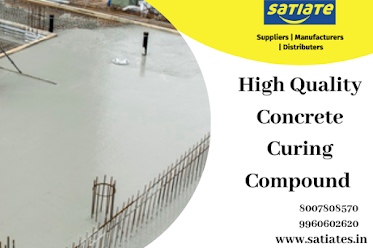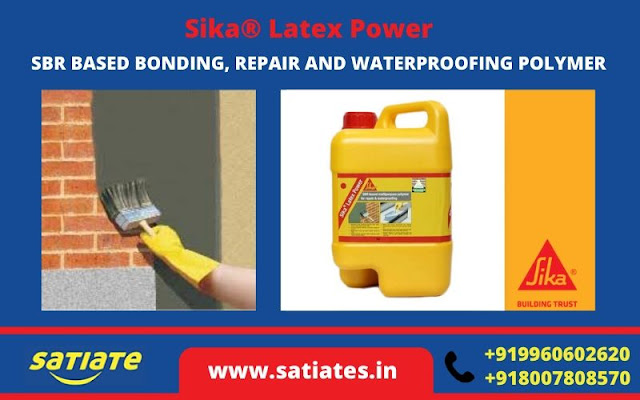Concrete Curing Compound and its types
Hydration is a process by which concrete acquires its strength and durability. This process takes place in cement particles and water. This hydration process of cement is not a temporary process but a process that has been going on for many days. Maintaining the right temperature and humidity is essential for overall hydration. But in practical terms, the concrete is open to the environment at the working site. This causes water to evaporate; Therefore the water available in the concrete will not be sufficient for adequate hydration process. In such cases, additional water must be added to compensate for the water loss caused by absorption and evaporation. This is called curing of concrete.
Water curing usually requires abundant water and sometimes concrete works cannot be done in areas where water is scarce or due to many other reasons not enough water can be made available. Thus, it is necessary to find alternative solutions for water treatment such as the provision of impermeable coatings, i.e. using plastic sheeting or healing compounds.
Curing compounds are used to reduce or minimize water or moisture from concrete due to evaporation during the initial setting and hardening period. The compounds of these treatments form a thin liquid membrane on the surface of the concrete which prevents the evaporation process to some extent and retains moisture in the concrete. Hence, they are also called liquid membrane-forming healing compounds.
Mentioned below are four types of curing compounds which are popular and easily available in the market.
Synthetic Resin-Based Curing Compounds
Acrylic-Based Curing Compound
Wax-Based Curing Compound
Chlorinated Rubber Based Curing Compound
Synthetic Resin-Based Curing Compounds
Resin and wax-based curing compounds can effectively seal concrete surfaces. But over time, that is likely to change. Within 2 days after their application, they begin to disperse and peel. So, if you want to start your plasterwork, it can be done after 28 days or later.
Acrylic-Based Curing Compound
Acrylic-based curing compounds allow the subsequent plaster to adhere well and this is an added benefit. This membrane does not disintegrate or collapse, and due to the basic properties of the rye crystal emulsion, the binding of the ointment is better.
Chlorinated Rubber Based Curing Compound
Chlorinated rubber based curing compounds form a thin film and fill a mini-hole on the concrete surface which prevents the concrete from drying out. Finally, the surface lays out the film.
Wax-Based Curing Compound
The average efficacy of resin and wax-based membrane-forming healing compounds can be considered approximately 80%, although in practice the efficacy of typical treatments is 96% for 24 hours, 84% for 72 hours, 74% for 7 days and 65% for 14 days.
A curing compound is a liquid substance that is added to newly installed concrete as a surface coating. Curing compounds are used to reduce water or heat loss to create favorable conditions for the preparation of concrete. Curing is required for hydration of cement when making concrete. Therefore, care must be taken to maintain the required humidity.
From Passive Fire Protection, Construction Chemicals, Waterproofing Chemicals, Grouting Compounds, Epoxy Injection Grout, PVC Membranes, Crystalline Waterproofing Services, Epoxy Injection Grouting Services, and Professional.
Satiates Solutions is the country’s leading provider of innovative solutions in Passive fire protection, Construction chemical, Waterproofing Chemicals, Grouting Compound, Admixtures Chemicals, Epoxy Injection Grout, Pvc Membrane, Crystalline Waterproofing Service, Epoxy Injection Grouting Service and full line of professional Concrete Curing Compounds for the prevention of premature water loss from concrete.
Contact us: (+91) 8007808570, (+91) 9960602620
Visit us: http://www.satiates.in/curing-compound.php



Comments
Post a Comment